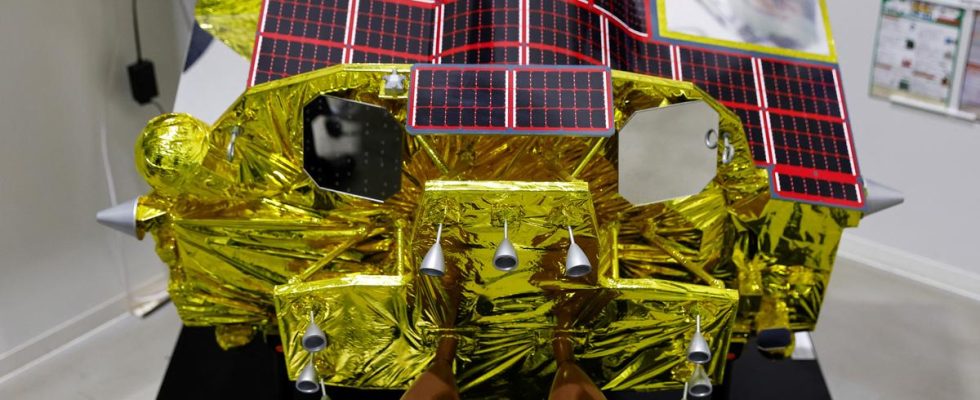KIM KYUNG-HOON / REUTERS
The Japanese space agency concluded that this high-precision operation was a success and communication could be established, but “solar cells do not produce energy,” she explained.
The Japanese space module SLIM successfully landed on the Moon during the night from Friday to Saturday (Japanese time) but its solar cells do not produce energy, announced the Japanese space agency, Jaxa. “SLIM landed on the Moon at 12:20 a.m.» Saturday (Friday 3:20 p.m. GMT), Jaxa confirmed in a press release, adding that “communications have been established» since the moon landing but that the solar cells of the module «do not produce energy“.
The Japanese SLIM space module has succeeded during the night from Friday to Saturday attempt to land on the Moon with unparalleled precision, announced the Japanese space agency (Jaxa). The SLIM module (Smart Lander for Investigating Moon), which had been orbiting the rocky star since the end of December, had begun its descent around twenty minutes earlier at a speed of around 1700 meters per second.
This small unmanned spacecraft (2.4 m long, 1.7 m wide and 2.7 m high) was not only supposed to land on the moon, but also to land within a radius of 100 meters from its target, radius considered a high degree of precision. Hence his nickname “Moon Sniper“.
“A huge challenge” in precision
It is common for lunar vehicles to land several kilometers from their target, which can complicate their exploration missions. And the moon landing is more difficult than landing on asteroids – a feat already achieved, including by Jaxa – because gravity on the Moon is stronger than on small celestial bodies.
Landing precisely on the Moon is “a huge issue» for SLIM, Emily Brunsden, director of the Astrocampus at the University of York, explained to AFP. The precision of “Sniper» constitutes “a huge technological advancement that will make it possible to design missions aimed at answering much more specific research questions“. But achieving this feat is “exceptionally technologically challenging“. “There is usually only one chance, so even the slightest mistake can result in mission failure», she warned.
SLIM was to land in a small crater less than 300 meters in diameter called Shioli, from where the machine should be able to carry out ground analyzes of rocks believed to come from the lunar mantle, the internal structure of the Earth’s natural satellite, which is still very poorly known.
” data-script=”https://static.lefigaro.fr/widget-video/short-ttl/video/index.js” >

